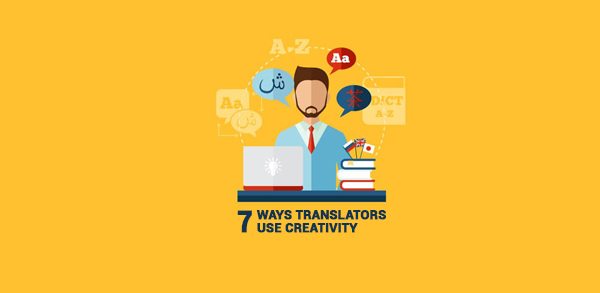
7 Ways Translators Use Creativity
In translation, the content in one document is rewritten in another language, retaining the meaning and effect of the original content.
Creative translation involves adapting the language of the target document into the style that’s the most apt for the intended audience. This is especially important where marketing materials like ads are concerned. With just basic language skills, mere substitution of the words won’t suffice here; the trick is to convey the message, and for it to have the effect the original writer intended it to have.
Here, the translator has to be intimately familiar with not just the linguistic nuances of the target language, but also the culture, and mindset of the people who speak that language.
The task of adapting a text into a new reality, and being a mediator between two languages demands that the translator be intuitive and creative. Translating is not mere changing of words from one language to another. It is far more complex; they often have to use completely different words to convey the same meaning. This is most relevant in literary works and marketing materials, which is usually full of catchy phrases, idiomatic expressions, similes, jokes, adages, and so on.
It may not always be possible to do a 100% perfect translation; but as long as it conveys the same meaning and effect and is acceptable to the target audience, the purpose is achieved.
Here is how translators show their creativity:
1. Combining Different Skills
Interpreter and translator communicate with others by converting oral and written messages respectively from one language to another by combining various skills. To translate legal document or any such content, the translator has to tackle several issues before producing the final result. They have to combine their language fluency, writing skills, understanding of the cultural nuances of both the source and target language, and a thorough understanding of the deep, real meaning, and not what’s seen on the surface. They often use technology like TM, glossaries, CAT and more.
2. Personal Style
If you give the same work of literature or ad copy to two different translators, you can be sure that they will turn in work that sounds very different from the other – yet it effectively conveys the same meaning as in the original text. This is because each translator has a personal style, and their own favorite words, phrases and terms. This is proof that translation is indeed creative work!
3. Creative Perception
As translators need to have subject matter expertise, they have to do in-depth reading to acquire the requisite knowledge. Anyone who reads finds better and more innovative solutions to the assigned tasks. They become so skilled in one area that they may well be able to rectify factual errors in the text too.
4. Copy writing
As a natural extension of their translation services, translators often provide copywriting services; their natural ability to be clear and precise, and use apt wording can actually make them excellent copywriters.
5. Language Creativity
Being fluent in two languages, translators use languages as their tools of creativity, just as a painter would use brushes and colors, or a musician would use a guitar. They can make up for voids in one language through the creative combination of words from that, and the other language, to deliver text that is not only an excellent translation, but an interesting read.
6. Marketing and Branding
A creative person will certainly do a great job of marketing themselves! With their writing skills, they can create catchy and attractive promotional text that conveys their skills and talents to prospective customers. In short, they can use their writing skills to create their brand, and promote it. Of course, here we are talking about freelancers and business owners; translators working in translation service companies may not necessarily have this skill.
7. Being skilled in other arts
Usually, people who are of an artistic bent display talents in multiple arts. Constantly being engaged in creative work attunes the mind and brain to be creative in all areas of life. You may be surprised to know that most writers and translators are creative in music, fine arts, singing, acting, and so on. This is because essentially they are engaged in understanding the source, and translating it into a target. Take the example of a pianist and a piece of music. They will first read the notes to understand the tune, and then they have to transform it into the music that the audience will hear! Isn’t it the same process?
Support Our Journalism
We cannot do without you.. your contribution supports unbiased journalism
IBNS is not driven by any ism- not wokeism, not racism, not skewed secularism, not hyper right-wing or left liberal ideals, nor by any hardline religious beliefs or hyper nationalism. We want to serve you good old objective news, as they are. We do not judge or preach. We let people decide for themselves. We only try to present factual and well-sourced news.







